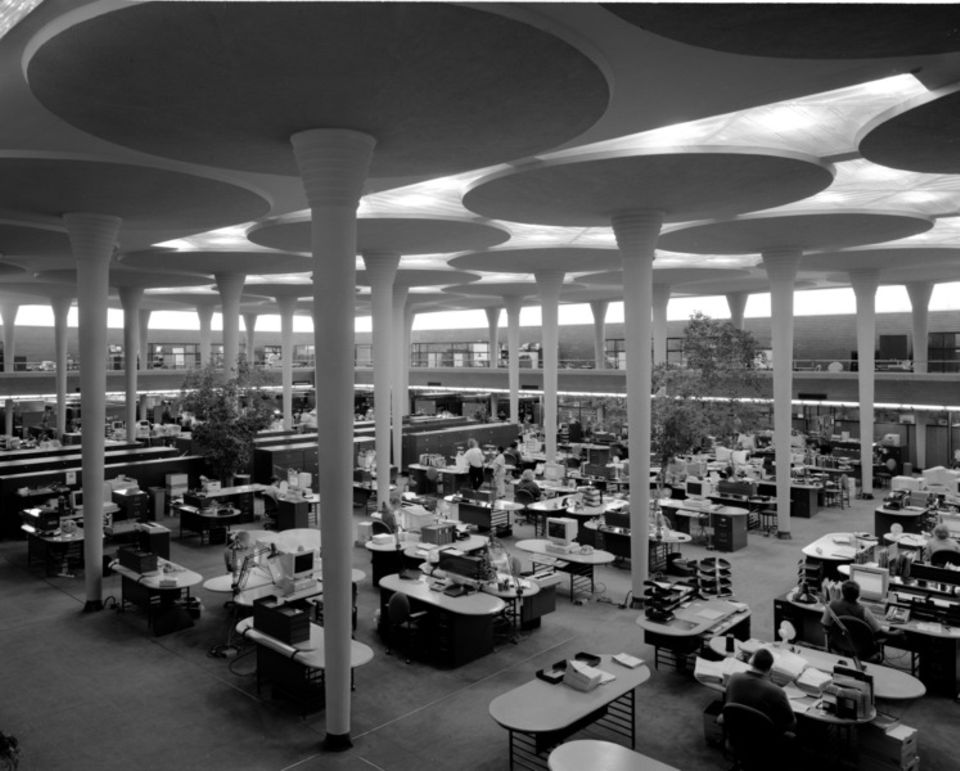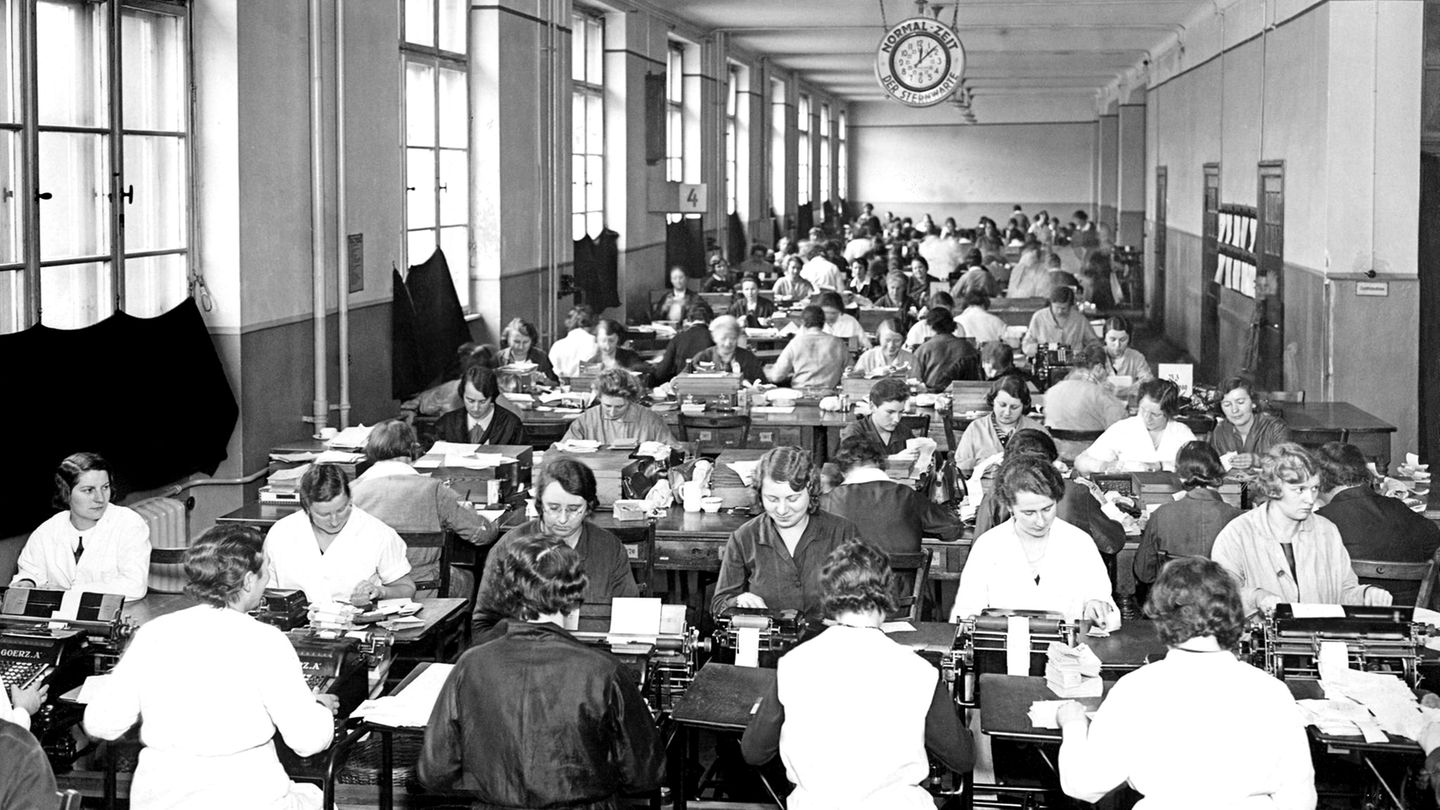The open-plan office divides minds: some find it necessary, for others it is pure horror. About the history of the office – and how much cultural, technological and social factors have changed this place.
Some sit in a room with their colleagues, others cannot imagine sharing the office with another person: the workplace has become a hot topic. At least since it became clear that the open-plan offices are cheaper for the company, but not always more useful.
The question arises: How did we actually get here? How did the office become as we know it today?
The beginnings of the office can be found in ancient Rome. Briefs were kept in the so-called, today it would be called the State Archives. There were tablets made of wood, ivory or metal covered with wax, as well as scrolls of parchment and bronze tablets. Such a tabularium was not only found in great Rome, but also on the edge of the empire.
The Tabularium had little to do with today’s offices, but the Skriptrium had more to do with it. These office rooms, which have been emerging since late antiquity, were mostly located in monasteries. Texts were copied there by hand. In the Middle Ages, monks sat there in the first, separate cubicles or in larger rooms. The painting of St. Augustine in cloister created by Sandra Bottecelli in 1494 shows a writing man in a three-walled niche that can be closed by a curtain. Not just a job, but also a visible sign of prestige and power – according to two researchers from Swinburne University in an article on “”.

But such rooms were rare in the Middle Ages. Anyone who had to write for professional reasons did so at home. Offices as work space apart from monasteries had not yet been invented. According to the Canadian architect. Lawyers, civil servants, and other writing professions began to maintain offices. This development started in cities like Amsterdam, London and Paris. This made the functionality of the building diverse: the office that was only there for work. And the home, a place that went hand in hand with privacy and comfort. In London, these are among the first purpose-built buildings. From 1726 the writings of the Royal Navi were stored there. A meeting room, the Admiralty Board Room, is still in use today. Companies also followed this trend. Sir Charles Trevelyan, Secretary of the British Treasury between 1840 and 1850: “For intellectual work, separate rooms are necessary so that a person who works with the head is not interrupted.”
The office buildings, on the other hand, were supposed to be functional – but very quickly took on another function: They were supposed to illustrate the power, sometimes also the wealth, of those who work there. The great banking dynasties of the Rothschilds or the Barings showed their wealth through magnificent buildings.
The creation of the open plan office
The open-plan office emerged at the beginning of the 20th century. designed the Larkin Administration Building in 1906 – the first modern office building ever. The new headquarters should bring the highest level of efficiency, productivity and collaboration with it. In 1936 Wright designed the world’s first open plan office building for SC Johnson Wax. Here, around 250 simple employees sat together in one room. However, under better conditions than in the past: brighter light, insulation, higher quality materials – but not without an ulterior motive: the work changed – and the offices were also trimmed for maximum productivity. What had happened on the assembly lines as a result of the industrial revolution should now also continue in office jobs.

In the 1960s it was a German idea, the concept of which is still present today: the USA and Great Britain know the open office as the “office landscape”. This area should stimulate the interaction between colleagues. And the open plan office was popular. The two of them when they wanted to break up the “rigid and ineffective structures of large, bureaucratic organizations”. Open areas, loosely positioned furniture and the use of partitions and plants also looks very modern again. This breakthrough did not come about in hip New York, but in Gütersloh. There the two furniture manufacturers designed the Bertelsmann publishing house (which also includes the stern heard) around.
Long communal desks were still popular in the United States. Robert Probst, art professor in Colorado, worked for the furniture maker Herman Miller and wrote derogatory: “Today’s office is like wasteland. It saps vitality, blocks talent and prevents performance.” These office landscapes at that time were designed like assembly-line workplaces. Probst contrasted this with his “Action Office”. Probst gave the desk workers hinged side panels for a little privacy. These partitions were still a long way from the current work booths found in some call centers.
According to “Quartz”, the construct prevailed. In the 1970s and 1980s, more and more companies in the USA converted their offices in this style. And that is exactly what became the undoing of the “Action Office”: Managers crammed more and more desks into one room ^. In the end, the offices resembled the cube farms that are mainly found in the USA today.
The following decades were for the “Action Büro”: Due to mergers and acquisitions, these little desk islands were quickly empty. Instead of freedom and modernity, this type of office became a symbol of the replaceability of employees. However, there was no turning away from the open-plan office – whether divided or not.
The open plan office today
Rather, the open-plan office experienced an upswing. Companies designed their spaces to be open and wide, with some green plants and a small seating area here and there. They wanted to combine everything: the interaction of the employees, but also the cost reduction through less space. Harvard University quickly ruined the dream: employees in large offices communicate less personally with one another, conversations are outsourced to chats and emails, the university researchers found out.
The question is: how close do employees need to the office, to their colleagues? Research suggests that we need to be together and to be together. In the meantime, it’s no longer just about oversized workspaces. The internet brings a new turning point: the home office. Employees should be able to combine their private and professional life better. And companies can save expensive jobs. So a good development for both sides?
Not necessarily. Large companies have long since ordered. The home office, which should actually make the employees freer and happier, she has at least in part
, i.e. office space that employees choose. A team working together on a project? There are open spaces and large tables for this. An employee has to make phone calls in peace and concentrate? Closed, small cabins offer him a retreat. And in the end they are reminiscent of the small niches used by monks in the Middle Ages.
Source From: Stern
Jane Stock is a technology author, who has written for 24 Hours World. She writes about the latest in technology news and trends, and is always on the lookout for new and innovative ways to improve his audience’s experience.




